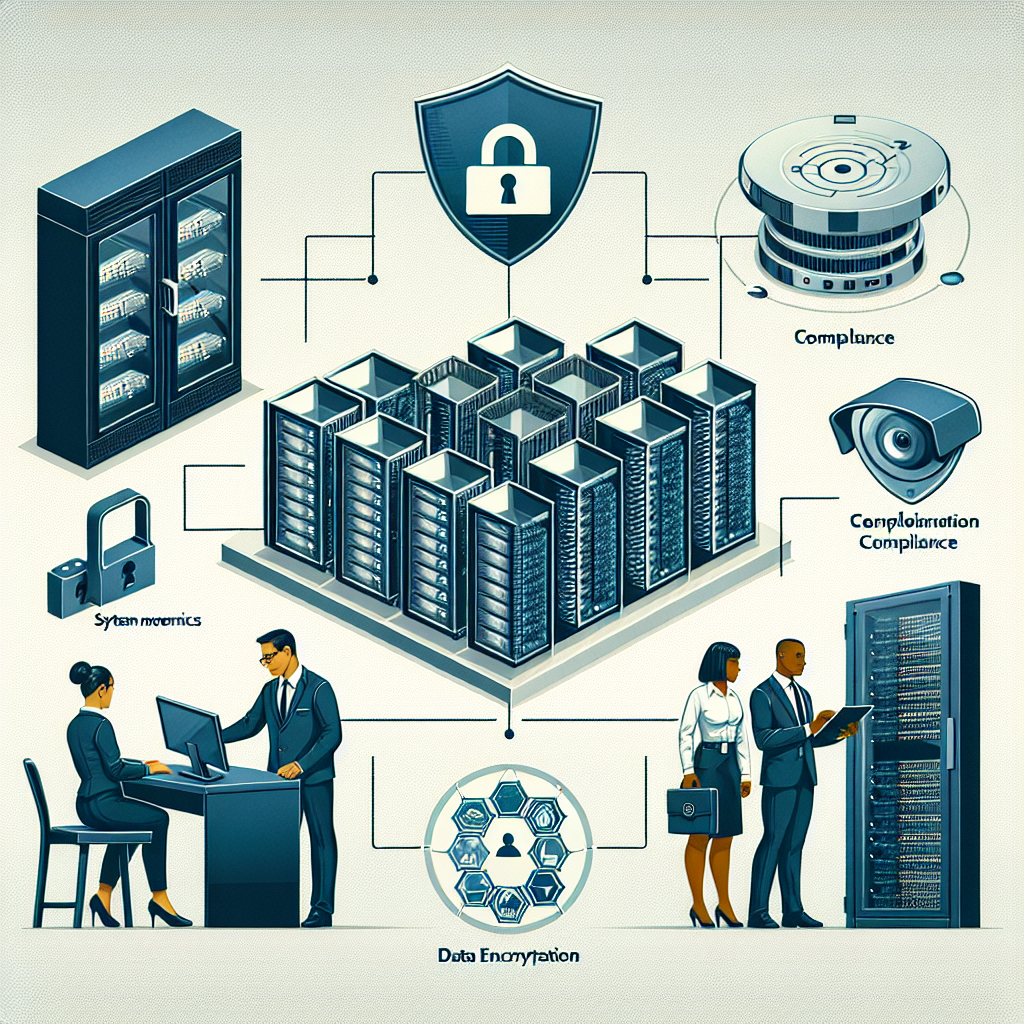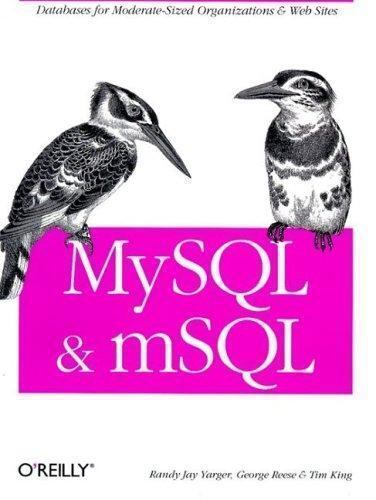Your cart is currently empty!
Tag: Robust

Ensuring Compliance and Data Protection with Robust Data Center Security Systems
In today’s digital age, data has become one of the most valuable assets for businesses. With the increasing amount of sensitive information being stored and shared online, ensuring compliance and data protection has become a top priority for organizations. One of the key ways to achieve this is through robust data center security systems.Data centers are the heart of any organization’s IT infrastructure, housing servers, storage devices, and networking equipment that store and process vast amounts of data. As such, they are a prime target for cyber attacks and data breaches. In order to protect this valuable information, organizations must implement strong security measures to prevent unauthorized access and ensure compliance with data protection regulations.
One of the first steps in ensuring data center security is to conduct a thorough risk assessment to identify potential vulnerabilities and threats. This will help organizations understand where their data is most at risk and what security measures need to be implemented to mitigate these risks. Common security measures include access controls, encryption, firewalls, and intrusion detection systems.
Access controls are essential for restricting access to sensitive data and ensuring that only authorized personnel can access the data center. This can be achieved through biometric authentication, key card access, and password protection. Encryption is another crucial security measure that helps to protect data from being intercepted and stolen by cyber criminals. By encrypting data both at rest and in transit, organizations can ensure that even if data is compromised, it remains unreadable to unauthorized users.
Firewalls and intrusion detection systems are also essential components of data center security systems. Firewalls help to monitor and control incoming and outgoing network traffic, while intrusion detection systems can detect and alert administrators to potential security breaches in real-time. By implementing these security measures, organizations can proactively protect their data and respond quickly to any security incidents.
In addition to implementing security measures, organizations must also ensure compliance with data protection regulations such as the General Data Protection Regulation (GDPR) and the Health Insurance Portability and Accountability Act (HIPAA). These regulations require organizations to protect the privacy and security of personal data and impose strict penalties for non-compliance. By implementing robust data center security systems, organizations can demonstrate their commitment to data protection and ensure compliance with these regulations.
In conclusion, ensuring compliance and data protection with robust data center security systems is essential for organizations to protect their valuable data and maintain the trust of their customers. By conducting a risk assessment, implementing strong security measures, and ensuring compliance with data protection regulations, organizations can safeguard their data and mitigate the risks of cyber attacks and data breaches. Investing in data center security is an investment in the future success and reputation of the organization.

Protecting Your Data Center with Robust Backup and Recovery Protocols
In today’s digital age, data centers are the backbone of many businesses, housing critical information and systems that are essential for day-to-day operations. With the increasing reliance on technology, protecting this valuable data has become more important than ever. One of the key components of safeguarding your data center is implementing robust backup and recovery protocols.Data loss can occur for a variety of reasons, from hardware failures and human error to cyberattacks and natural disasters. Without adequate backup and recovery measures in place, businesses risk losing valuable information that can have a significant impact on their operations and bottom line. That’s why it’s essential to have a comprehensive backup strategy that ensures your data is protected and easily recoverable in the event of a disaster.
There are several best practices that can help ensure the security and integrity of your data center. First and foremost, regular backups should be performed to create copies of your data that can be stored securely offsite. This ensures that even if your primary data center is compromised, you can still access and restore your information from a separate location.
In addition to regular backups, it’s important to test your recovery protocols to ensure they are functioning as intended. This can help identify any potential issues or gaps in your backup strategy before they become a problem. Regular testing also ensures that your team is familiar with the recovery process and can quickly and effectively restore data in the event of a disaster.
Another important aspect of protecting your data center is implementing strong security measures to prevent unauthorized access or data breaches. This includes encrypting sensitive information, restricting access to critical systems, and regularly updating security protocols to stay ahead of potential threats.
Furthermore, having a disaster recovery plan in place can help minimize downtime and ensure business continuity in the event of a catastrophic event. This plan should outline the steps to take in the event of a disaster, including how to quickly restore data and systems to minimize the impact on operations.
Overall, protecting your data center with robust backup and recovery protocols is essential for safeguarding your business’s most valuable asset – its data. By implementing best practices, testing your recovery protocols, and staying ahead of potential threats, you can ensure that your data center remains secure and resilient in the face of any challenge.

Mitigating Risks with a Robust Data Center Incident Management Strategy
In today’s digital age, data centers are the backbone of any organization’s IT infrastructure. With the increasing reliance on technology, organizations must ensure that their data centers are secure and reliable to prevent any potential disruptions to their operations. However, despite the best efforts to prevent incidents, data centers are not immune to risks such as power outages, hardware failures, cyber attacks, or natural disasters.To mitigate these risks, organizations must have a robust data center incident management strategy in place. This strategy involves identifying potential risks, implementing preventive measures, and developing a plan to respond to and recover from incidents in a timely and efficient manner.
One key aspect of a data center incident management strategy is risk assessment. Organizations must conduct regular risk assessments to identify potential vulnerabilities in their data center infrastructure. This includes evaluating the physical security of the data center, assessing the reliability of power and cooling systems, and examining the effectiveness of cybersecurity measures. By identifying potential risks, organizations can proactively address them before they escalate into major incidents.
Another important component of a data center incident management strategy is implementing preventive measures. This includes implementing redundant power and cooling systems to prevent downtime in the event of a power outage or equipment failure. It also involves regularly updating and patching software to protect against cyber threats and conducting regular backups of critical data to ensure quick recovery in case of data loss.
In addition to preventive measures, organizations must also develop a comprehensive incident response plan. This plan should outline the roles and responsibilities of key personnel in the event of an incident, as well as the steps to be taken to mitigate the impact of the incident and restore normal operations as quickly as possible. This may include activating backup systems, notifying relevant stakeholders, and coordinating with external vendors or service providers for assistance.
Furthermore, organizations should also conduct regular drills and exercises to test the effectiveness of their incident response plan and ensure that all personnel are familiar with their roles and responsibilities in the event of an incident. By regularly reviewing and updating the incident response plan, organizations can ensure that they are prepared to handle any potential incidents that may arise.
In conclusion, mitigating risks in a data center requires a proactive approach that includes identifying potential vulnerabilities, implementing preventive measures, and developing a comprehensive incident response plan. By having a robust data center incident management strategy in place, organizations can minimize the impact of incidents and ensure the continued reliability and security of their data center infrastructure.

Tips for Creating a Robust Data Center Documentation Strategy
In today’s digital age, data centers play a crucial role in storing, processing, and managing large amounts of data for businesses. With the increasing complexity of data center environments, having a robust documentation strategy in place is essential for ensuring smooth operations and effective troubleshooting. Here are some tips for creating a robust data center documentation strategy:1. Establish a clear hierarchy: Start by organizing your documentation in a clear and logical hierarchy. This could include categories such as network infrastructure, server configurations, storage systems, and security policies. By structuring your documentation in a way that is easy to navigate, you can quickly find the information you need when troubleshooting issues or making changes to your data center environment.
2. Use consistent naming conventions: Consistent naming conventions for servers, switches, storage devices, and other components in your data center can help avoid confusion and ensure that everyone understands the naming scheme. This can also make it easier to search for specific items within your documentation and reduce the risk of errors when making changes to your infrastructure.
3. Document hardware and software configurations: It’s important to document the hardware and software configurations of all devices in your data center, including servers, storage systems, networking equipment, and security appliances. This information can help you troubleshoot issues, track changes over time, and ensure that your infrastructure is properly maintained and updated.
4. Include network diagrams: Network diagrams are a visual representation of your data center infrastructure, including connections between devices, IP addresses, and network segments. Including network diagrams in your documentation can help you understand the layout of your network, identify potential points of failure, and troubleshoot connectivity issues more effectively.
5. Document procedures and best practices: In addition to documenting hardware and software configurations, it’s important to document procedures and best practices for managing your data center environment. This could include guidelines for deploying new servers, configuring network settings, performing backups, and responding to security incidents. By documenting these procedures, you can ensure consistency in your operations and reduce the risk of errors.
6. Regularly update and review documentation: Data center environments are constantly evolving, with new hardware and software being added, configurations changing, and security policies being updated. It’s important to regularly review and update your documentation to ensure that it remains accurate and up-to-date. This can help you avoid confusion, reduce downtime, and improve the overall efficiency of your data center operations.
In conclusion, creating a robust data center documentation strategy is essential for ensuring the smooth and efficient operation of your data center environment. By following these tips and best practices, you can create a comprehensive documentation framework that will help you effectively manage your data center infrastructure and respond to issues as they arise.

Mitigating Risks with Robust MTBF Planning for Data Centers
Data centers are the backbone of modern businesses, housing critical IT infrastructure and data that organizations rely on for their day-to-day operations. With the increasing reliance on digital technology, the importance of ensuring the reliability and availability of data centers has never been more crucial.One key aspect of ensuring the reliability of data centers is implementing robust Mean Time Between Failures (MTBF) planning. MTBF is a measure of the average time that a component or system will operate before experiencing a failure. By accurately estimating and planning for MTBF, organizations can proactively mitigate the risks of downtime and ensure the continuous operation of their data centers.
There are several steps that organizations can take to effectively mitigate risks with robust MTBF planning for data centers. Firstly, it is essential to conduct a thorough assessment of the components and systems within the data center to identify potential failure points. This can involve reviewing historical data on past failures, as well as conducting reliability testing on critical components.
Once potential failure points have been identified, organizations can then implement proactive maintenance strategies to address these risks. This can include regular equipment inspections, routine maintenance schedules, and timely repairs or replacements of components that are approaching the end of their expected lifespan. By staying ahead of potential failures, organizations can minimize the risk of unexpected downtime and ensure the continuous operation of their data centers.
In addition to proactive maintenance, organizations can also implement redundancy and failover mechanisms to further mitigate risks. Redundancy involves duplicating critical components or systems within the data center to ensure that if one fails, there is a backup in place to take over. Failover mechanisms can automatically switch to the backup system in the event of a failure, minimizing the impact on operations.
Furthermore, organizations can leverage predictive analytics and monitoring tools to continuously monitor the health and performance of their data center components. By proactively identifying potential issues before they escalate into failures, organizations can take corrective action and prevent downtime.
Overall, mitigating risks with robust MTBF planning for data centers is essential for ensuring the reliability and availability of critical IT infrastructure. By conducting thorough assessments, implementing proactive maintenance strategies, and leveraging redundancy and failover mechanisms, organizations can minimize the risk of downtime and ensure the continuous operation of their data centers. Investing in MTBF planning is not only a proactive approach to risk management but also a critical component of maintaining the integrity and resilience of data center operations in today’s digital age.

7 Steps to Creating a Robust Data Center Business Continuity Plan
In today’s digital age, data centers are the backbone of many businesses, storing and managing critical information that keeps operations running smoothly. However, disasters can strike at any time, putting this valuable data at risk. That’s why having a robust business continuity plan in place is essential to ensure the continued operation of a data center in the face of unforeseen events.Here are 7 steps to creating a robust data center business continuity plan:
1. Identify potential risks: The first step in creating a business continuity plan is to assess the potential risks that could disrupt data center operations. This can include natural disasters such as floods or earthquakes, as well as human-made threats like cyberattacks or power outages.
2. Define critical processes and resources: Identify the key processes, applications, and resources that are essential for the functioning of the data center. This will help prioritize recovery efforts during a disruption.
3. Develop a recovery strategy: Based on the identified risks and critical resources, develop a recovery strategy that outlines how the data center will respond to different scenarios. This should include detailed plans for data backup and restoration, as well as alternate communication channels and temporary workspace arrangements.
4. Establish communication protocols: Communication is key during a crisis, so it’s important to establish clear protocols for how information will be shared among data center staff, management, and stakeholders. This may include setting up a dedicated communication channel or establishing a call tree for quickly reaching key personnel.
5. Test the plan: A business continuity plan is only effective if it has been tested and proven to work. Conduct regular drills and simulations to ensure that all staff are familiar with their roles and responsibilities during a crisis, and make any necessary adjustments based on the results.
6. Monitor and update the plan: The business environment is constantly evolving, so it’s important to regularly review and update the business continuity plan to reflect any changes in technology, personnel, or risks. This will help ensure that the plan remains relevant and effective in protecting the data center.
7. Train staff: Finally, train all data center staff on the business continuity plan and their roles in executing it. This will help ensure a coordinated and effective response to any disruptions, minimizing downtime and protecting critical data.
By following these 7 steps, businesses can create a robust data center business continuity plan that will help mitigate the impact of disasters and ensure the continued operation of their critical infrastructure. Investing time and resources in developing and maintaining a comprehensive plan is essential for protecting valuable data and safeguarding the future of the business.

Redundancy and Resilience: Designing a Robust Data Center Network Infrastructure
In today’s digital age, data centers play a crucial role in supporting the growing demand for connectivity and data storage. With businesses relying heavily on data center infrastructure to ensure their operations run smoothly, it is essential to have a robust network infrastructure in place to prevent downtime and ensure data availability.One key aspect of designing a resilient data center network infrastructure is incorporating redundancy. Redundancy refers to having backup systems in place to ensure that in the event of a failure or outage, there are alternative paths for data to flow through. Redundancy can be achieved through various means, such as using multiple network connections, routers, switches, and power sources. By having redundant components in place, data centers can minimize the risk of downtime and ensure continuous operation.
In addition to redundancy, resilience is another crucial factor in designing a robust data center network infrastructure. Resilience refers to the ability of a network to withstand and recover from disruptions, such as hardware failures, cyber attacks, or natural disasters. To enhance resilience, data centers can implement measures such as disaster recovery plans, data replication, and real-time monitoring to quickly identify and address any issues that may arise.
When designing a data center network infrastructure, it is important to take a holistic approach that considers both redundancy and resilience. By incorporating redundant components and implementing resilient strategies, data centers can ensure high availability and data integrity, even in the face of unexpected challenges.
Furthermore, data centers should also consider scalability and flexibility in their network infrastructure design. As data volumes continue to grow and technology evolves, data centers need to be able to adapt and expand their infrastructure to meet changing demands. By designing a scalable and flexible network infrastructure, data centers can future-proof their operations and ensure they can continue to support the needs of their users.
Overall, designing a robust data center network infrastructure requires careful planning and consideration of redundancy, resilience, scalability, and flexibility. By implementing these key principles, data centers can ensure high availability, data integrity, and seamless operation, even in the face of unexpected challenges.

Implementing a Robust Data Center Change Management Strategy
In today’s fast-paced and ever-evolving digital landscape, data centers play a crucial role in supporting businesses’ operations and ensuring the smooth functioning of their IT infrastructure. With the increasing complexity and scale of data center operations, it is essential for organizations to have a robust change management strategy in place to mitigate risks, ensure compliance, and streamline the process of implementing changes.Implementing a robust data center change management strategy involves a combination of processes, tools, and best practices to manage the lifecycle of changes effectively. It is crucial to have a clear understanding of the impact of changes on the data center environment and to have a structured approach to assess, plan, implement, and review changes.
One of the key components of a successful data center change management strategy is having a well-defined change management process. This process should outline the steps involved in requesting, reviewing, approving, and implementing changes, as well as the roles and responsibilities of different stakeholders involved in the process. By establishing a clear and standardized process, organizations can ensure that changes are implemented in a controlled and predictable manner, minimizing the risk of disruptions to the data center environment.
Another important aspect of implementing a robust data center change management strategy is the use of automation and tools to streamline the change management process. Automation tools can help organizations automate routine tasks, track and manage changes more effectively, and ensure compliance with regulatory requirements. By leveraging automation tools, organizations can reduce the risk of human error, improve efficiency, and enhance the overall effectiveness of their change management processes.
In addition to having a well-defined process and leveraging automation tools, organizations should also establish a robust change control board (CCB) to oversee and approve changes to the data center environment. The CCB should be comprised of key stakeholders from different departments, including IT, security, operations, and compliance, to ensure that changes are thoroughly reviewed and approved before implementation. By involving stakeholders from different departments in the change management process, organizations can ensure that changes are aligned with business objectives and regulatory requirements.
Ultimately, implementing a robust data center change management strategy requires a combination of processes, tools, and best practices to effectively manage changes and mitigate risks. By establishing a clear and standardized change management process, leveraging automation tools, and involving key stakeholders in the change control board, organizations can ensure the smooth implementation of changes and maintain the stability and availability of their data center environment.

MySQL High Availability: Tools for Building Robust Data Centers

MySQL High Availability: Tools for Building Robust Data Centers
Price : 20.32
Ends on : N/A
View on eBay
In today’s fast-paced digital world, ensuring high availability of data is crucial for businesses to stay competitive and meet the demands of their customers. MySQL, one of the most popular open-source relational database management systems, plays a vital role in storing and managing data for many organizations.To achieve high availability in MySQL, it is essential to have robust tools and strategies in place to prevent downtime and ensure data is always accessible. In this post, we will explore some of the top tools and techniques for building a highly available MySQL data center:
1. MySQL Replication: Replication is a built-in feature of MySQL that allows you to create multiple copies of your database on different servers. This helps in distributing the load and ensures that if one server goes down, the other replicas can take over seamlessly.
2. MySQL Cluster: MySQL Cluster is a distributed database that provides high availability and scalability by automatically sharding data across multiple nodes. This allows for data redundancy and ensures that your database can handle high traffic loads without any downtime.
3. Load Balancers: Using load balancers such as HAProxy or MySQL Router can help distribute incoming traffic across multiple database servers, ensuring that no single server is overwhelmed. This helps in improving performance and preventing downtime due to server overload.
4. Automatic Failover: Implementing automatic failover mechanisms using tools like Orchestrator or ProxySQL can help in quickly detecting and recovering from server failures. This ensures that your database remains available even in the event of a server crash.
5. Monitoring and Alerting: Monitoring tools like Prometheus, Grafana, or Nagios can help in keeping track of the health and performance of your MySQL servers. Setting up alerts for critical metrics can help in proactively addressing issues before they lead to downtime.
By implementing these tools and strategies, businesses can ensure that their MySQL data center is highly available, robust, and can withstand any challenges that come their way. High availability is not just a luxury but a necessity in today’s data-driven world, and investing in the right tools and resources is crucial for staying ahead of the competition.
#MySQL #High #Availability #Tools #Building #Robust #Data #Centers
Ensuring Data Center Resilience with a Robust HVAC Strategy
In today’s digital age, data centers play a crucial role in storing, processing, and transmitting vast amounts of information. As such, ensuring the resilience and reliability of data centers is paramount to maintaining operations and preventing costly downtime. One key component of data center resilience is a robust heating, ventilation, and air conditioning (HVAC) strategy.HVAC systems are essential for maintaining the optimal operating conditions within a data center. They help regulate temperature, humidity, and air quality to ensure that servers and other equipment operate efficiently and reliably. Without a reliable HVAC system, data centers are at risk of overheating, equipment failure, and ultimately, data loss.
To ensure data center resilience, it is essential to implement a robust HVAC strategy that includes the following key elements:
1. Redundancy: Data centers should have redundant HVAC systems in place to provide backup in case of system failure. This ensures that temperature and humidity levels are maintained within the recommended range, even in the event of a malfunction.
2. Monitoring and control: An effective HVAC strategy includes advanced monitoring and control systems that continuously monitor temperature, humidity, and other environmental factors within the data center. This allows for real-time adjustments to be made to ensure optimal operating conditions.
3. Regular maintenance: Regular maintenance of HVAC systems is essential to ensure their reliability and efficiency. This includes routine inspections, filter replacements, and cleaning to prevent dust and debris buildup that can hinder performance.
4. Energy efficiency: Energy-efficient HVAC systems can help reduce operating costs while maintaining optimal performance. Implementing energy-saving measures such as using variable speed fans, high-efficiency filters, and implementing hot and cold aisle containment can help reduce energy consumption and environmental impact.
5. Scalability: As data centers grow and expand, HVAC systems must be scalable to accommodate increased cooling demands. Investing in scalable HVAC solutions ensures that data centers can adapt to changing needs without compromising performance or reliability.
By implementing a robust HVAC strategy, data center operators can ensure the resilience and reliability of their facilities. A well-designed HVAC system not only helps prevent equipment failures and downtime but also improves energy efficiency and reduces operating costs. In today’s data-driven world, investing in a reliable HVAC strategy is essential to maintaining the integrity and performance of data center operations.
